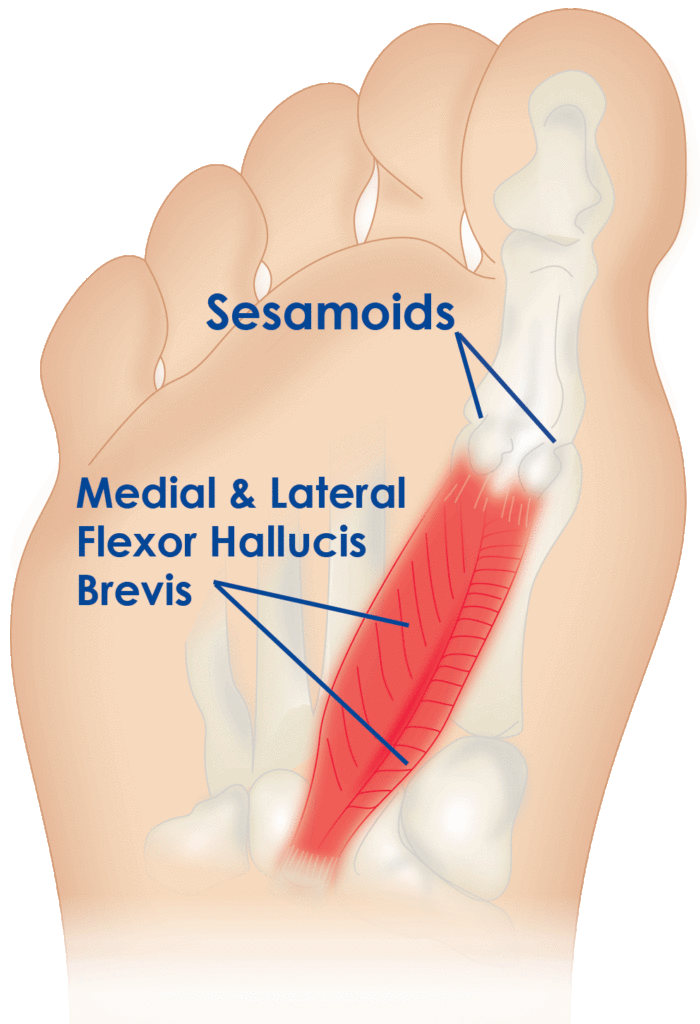The sesamoids are small bones that form and are located within tendons throughout our body. There are many of these bones in the human body but we are interested in the sesamoid bones in the feet. Underneath the big toe there are two small bones called the medial and lateral sesamoid bones. The sesamoids sit within the flexor hallucis brevis tendon and have an important role as they help to absorb pressure from ground reaction forces. Additionally, the sesamoids assist the flexor tendons to perform their function by acting as a pulley so the appropriate amount of flexion can be generated throughout the big toe joint. This mechanism if extremely important for balancing, walking and running. When these bones become inflamed it is referred to as sesamoiditis.

Sesamoiditis is an injury that usually occurs as a result of overuse and increased pressure on these bones over time. There are many different factors that can contribute to an increase pressure in our feet.
Risk factors for developing sesamoiditis may include:
- Footwear: wearing shoes with increased heel height or unsupportive shoes.
- Sports that place a high demand on the feet including dancing, athletics, running ect.
- Certain conditions that impact on bone health such as osteoporosis and osteoarthritis.
- Supinated (high arched) foot type.
- Certain occupations where there are long periods of standing and walking on hard surfaces.
- Increased body mass index (BMI).
- Certain foot deformities.
- Trauma to the big toe joint.
- Biomechanical factors which increase pressure on the big toe joint.
Here at Be Podiatry are podiatrists are skilled at diagnosing and treating sesamoiditis. Treatments may incorporate some of the following:
- Footwear changes or modifications
- Taping
- Padding
- Wedges
- Foot orthoses
- Load or activity management
- CAM walker (moon boot)
- Strengthening exercises
It is important to get your feet assessed if you think you may be suffering from sesamoiditis. There are many different diagnoses for pain under the big toe joint which may require a different form of treatment.
